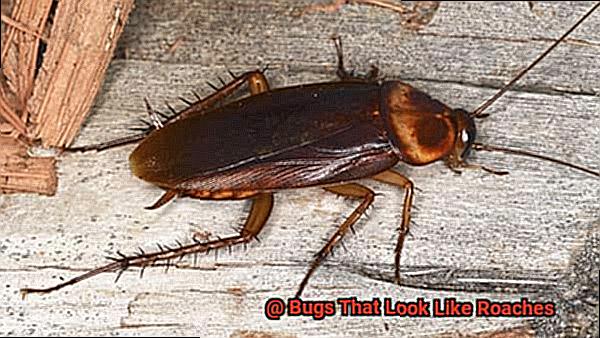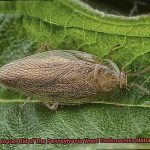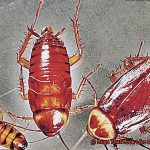For over 300 million years, cockroaches have roamed the earth, surviving in some of the harshest environments known to man. They’re fast, agile, and adaptable creatures that have earned a reputation as one of the most resilient species on the planet. But can they fly?
This question might make your skin crawl with visions of flying cockroaches invading your personal space. While it’s a fascinating topic, the answer isn’t black and white. Yes, some species of cockroaches are capable of flight, but not all of them possess this skill.
If you’re skeptical about these creepy crawlers soaring through the air or even buzzing past your ear, then buckle up because we’re about to take a deep dive into their world. In this blog post, we’ll explore everything from their anatomy and behavior to different species to determine if cockroaches can truly take flight.
So, hold on tight because this journey into the realm of cockroach aerodynamics is going to be an exhilarating ride.
Can Cockroaches Fly?
Contents
- 1 Can Cockroaches Fly?
- 2 Types of Cockroaches and Their Flight Capabilities
- 3 The Anatomy and Physiology of a Cockroach’s Wings
- 4 How Do Cockroaches Use their Wings?
- 5 The Advantages and Disadvantages of Flying for Cockroaches
- 6 Why Most Species of Cockroaches Don’t Fly
- 7 How Do People Combat a Cockroach Infestation?
- 8 Conclusion
Cockroaches are truly remarkable creatures that have been roaming the earth for millions of years. They are renowned for their resilience and adaptability, but can they fly? Well, it’s not exactly a straightforward answer.
With over 4,000 species of cockroaches in the world, only a few of them can actually take to the air. The American cockroach, the Australian cockroach, and the smokybrown cockroach are among the most common flying species, but even they prefer to run rather than fly. Their wings allow them to glide short distances from one surface to another, but they’re not exactly graceful in the air.
It’s important to note that not all cockroaches have wings, and not all winged cockroaches can fly. Some use their wings for gliding rather than flying and can only glide short distances before landing on a surface.
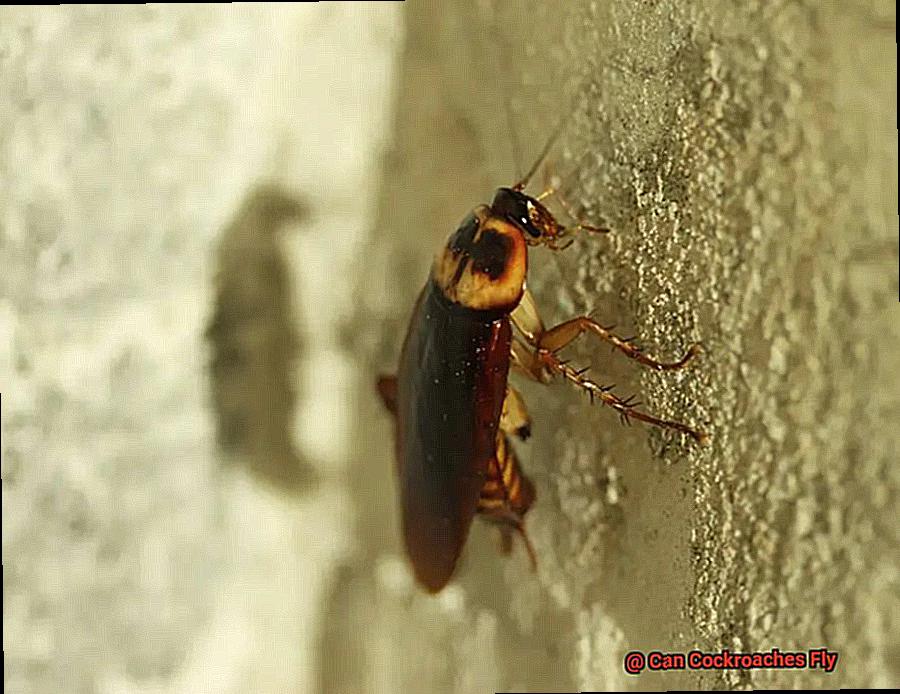
So why do some cockroaches have wings if they can’t fly? It’s all thanks to their evolutionary history. Cockroaches evolved from a group of insects that had wings, and over time, some species lost their ability to fly but retained their wings as a form of protection or display.
While some cockroaches may technically be able to fly or glide short distances, most of them prefer to crawl or run. In fact, flight is not a primary mode of transportation for these critters. They’re more likely to scuttle across surfaces or climb up walls than take to the air.
If you’re dealing with a cockroach infestation in your home, it’s crucial to identify the species first before trying to eliminate them. Flying or gliding cockroaches may require different methods of control than non-flying ones.
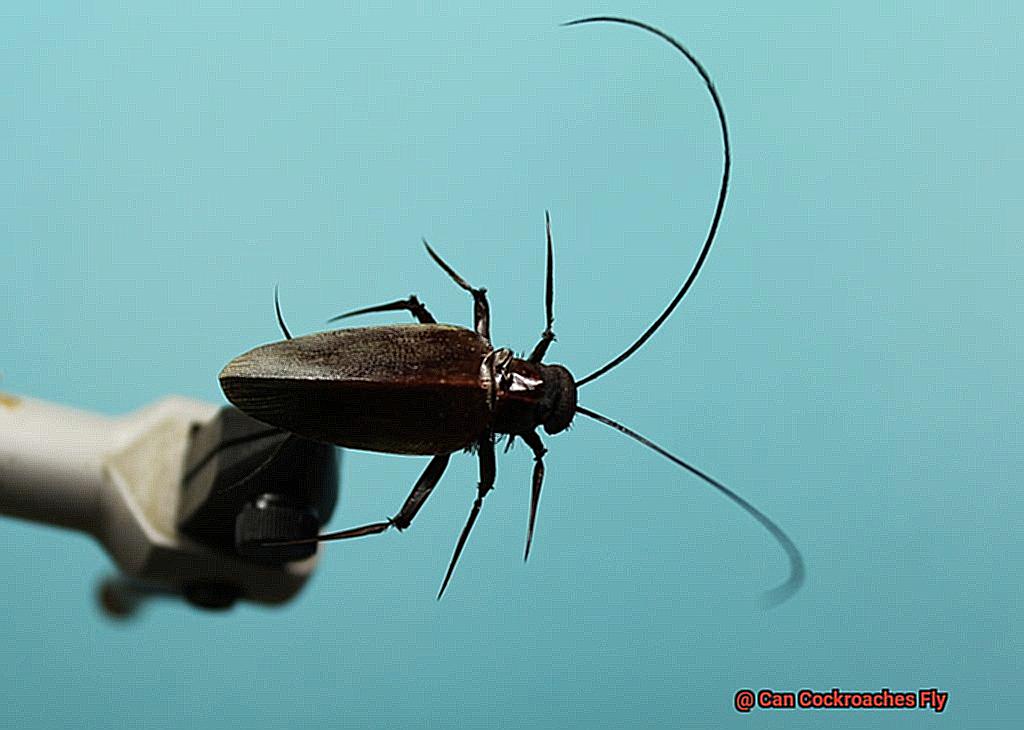
However, regardless of their flying abilities, focusing on controlling their access to food and water, sealing up cracks and crevices, and using insecticides is an effective way to combat them.
While some species of cockroaches can technically fly or glide short distances, it’s not their strongest trait. They’re more likely to crawl or run away than take flight.
Types of Cockroaches and Their Flight Capabilities
Cockroaches, known for their adaptability and resilience, are a diverse group of insects with over 4,500 species across the world. However, when it comes to their flying abilities, not all cockroaches are created equal. In this article, we will delve into the different types of cockroaches and their flight capabilities.
The American cockroach is the largest of the three common types of cockroaches, measuring up to 1.6 inches long. These pests have fully developed wings, which enable them to fly for extended periods. However, they prefer to run on flat surfaces rather than taking to the air.
In contrast, the German cockroach is smaller in size, at just half an inch long. Although they have short wings, these cannot support sustained flight. Instead, they can glide short distances when falling or jumping from a height.
The Oriental cockroach or water bug is about an inch long and has underdeveloped wings that cannot support flight. But don’t be fooled by their lack of flight capability; these critters are strong runners and can move quickly on both horizontal and vertical surfaces.
It’s important to note that not all species of cockroaches have wings, and some may only be able to flutter or glide short distances. Additionally, not all cockroaches have wings at all.
Understanding the different flight capabilities of various cockroach species is crucial for controlling and preventing infestations in households and commercial settings. While some species like the American cockroach can fly and cover large distances quickly, others like the German and Oriental cockroach have limited flight capabilities or none at all.
In conclusion, when it comes to flying, not all cockroaches are created equal. Some can fly for extended periods while others can only glide short distances or are unable to fly at all.
The Anatomy and Physiology of a Cockroach’s Wings
Cockroaches have been around for millions of years and are known for their impressive speed and agility. But did you know that some species of cockroaches can fly? Yes, you read that right – these resilient insects have wings that allow them to take to the air and escape danger. Let’s take a closer look at the anatomy and physiology of a cockroach’s wings to understand how they achieve this.
Cockroaches have two pairs of wings – the forewings or tegmina, and the hindwings. The tegmina are thick and leathery, shielding the hindwings that are used for flight. The hindwings are long and membranous, with veins that provide structure and support for flying. The wings are attached to the thorax by a series of muscles and joints that allow for a wide range of movement.
To take flight, a cockroach extends its wings outward from its body, then uses its powerful thoracic muscles to lift off the ground. It’s fascinating to note that while cockroaches can fly, they usually prefer running and climbing. This is because flying requires a lot of energy and can be dangerous as it makes them more visible to predators.
It’s essential to note that not all species of cockroaches can fly. For instance, American cockroaches can fly for extended periods, while German cockroaches can only glide short distances, and Oriental cockroaches cannot fly at all. Understanding these differences is important in controlling infestations.
The anatomy and physiology of a cockroach’s wings are complex and impressive. While not all species of cockroaches can fly, those that can do so with remarkable agility. By understanding these insects better, we can appreciate their resilience and adaptability even more.
How Do Cockroaches Use their Wings?
Cockroaches are undoubtedly fascinating creatures. Known for their lightning-fast speed and agility, these insects have been around for millions of years. But did you know that some species can fly? In this article, we’ll explore how cockroaches use their wings to navigate their surroundings.
It’s important to note that not all cockroach species have wings, and even those that do may not use them for flight. However, for the ones that can fly, their wings are located on their thorax – the middle section of their body. They have two pairs of wings: a shorter, more rigid front pair and a larger, more flexible hind pair.
When a cockroach wants to take flight, it extends its wings and lifts off from a surface. These short bursts of flight allow them to glide short distances or break falls when jumping from high surfaces. This ability to glide is crucial for survival as it enables them to move quickly around their environment.
Interestingly enough, not all cockroaches use their wings for flight or gliding. Some species have lost this ability altogether and solely rely on their legs for movement. Additionally, male cockroaches may use their wings to create a buzzing sound to attract female mates rather than for actual flight.
The Advantages and Disadvantages of Flying for Cockroaches
If you’re anything like me, the mere thought of cockroaches sends shivers down your spine. However, there’s no denying that these creepy crawlies are fascinating creatures, especially when it comes to their ability to fly. As an expert on the topic, I’m here to share some captivating insights about the advantages and disadvantages of flying for cockroaches.
Firstly, it’s important to note that not all cockroach species can fly. However, those that can have wings that they use for various purposes. So, what are the benefits of flying for these insects?
One significant advantage is their ability to escape predators quickly. If a predator is approaching on the ground, taking to the skies can save a cockroach’s life. Plus, flying allows them to find food sources more easily and cover greater distances when searching for a mate. Flying cockroaches are also skilled at navigating their way around obstacles and avoiding dangerous areas on the ground.
But there’s always a downside, right? Unfortunately, there are also disadvantages to flying for cockroaches. Flying requires a lot of energy, which means these insects need to eat more frequently to maintain their strength. It’s also riskier for them to fly as they may encounter obstacles or predators in the air. Furthermore, flying cockroaches are more vulnerable to changing weather conditions and may be blown off course during strong winds.
The ability to fly is both a blessing and a curse for cockroaches. While it provides them with several advantages, it also comes with its fair share of challenges. By understanding these factors, homeowners can better manage and prevent cockroach infestations in their homes.
Why Most Species of Cockroaches Don’t Fly
It’s a common misconception that these pests can take to the air, but in reality, only a small percentage of the over 4,000 species of cockroaches have wings that enable them to fly. So, why is this the case for the majority of these creepy crawlies?
One reason is that flying requires a lot of energy, and cockroaches are not very efficient at using their energy. This means that flying would be a huge drain on their resources, making it difficult for them to survive and reproduce. Additionally, flying makes a cockroach more vulnerable to predators, and many species of cockroaches have adapted to life on the ground where they can hide from predators more easily.
But perhaps the most interesting reason why most species of cockroaches don’t fly is that they simply don’t need to. Cockroaches are able to survive and thrive without the ability to fly. They are incredibly agile and can move quickly on the ground, climb walls and other surfaces, and even jump short distances. This allows them to navigate their environment without the need for flight.
It’s also worth noting that there are different types of wings among cockroach species. Some have fully developed wings that enable them to fly, while others have wings that are only partially developed or completely absent. These differences in wing development reflect the varying environmental pressures that different species of cockroaches have faced over time.
Overall, while it may be surprising to learn that most species of cockroaches don’t fly, understanding the reasons behind this adaptation can help us gain a better appreciation for these fascinating creatures and how they have adapted to their environments over time.
How Do People Combat a Cockroach Infestation?
There are several effective methods for combating these pesky insects.
The first step in controlling a cockroach infestation is to identify the areas where they are present and eliminate their food sources. These pesky insects can survive on just about anything, including garbage, pet food, and crumbs. So, it’s essential to keep your home clean and tidy by regularly sweeping, mopping, and vacuuming.
For those seeking a more hands-off approach, bait stations are an effective alternative. These stations contain poison that attracts cockroaches, which then carry it back to their nest and spread it to other cockroaches. Bait stations can be placed in areas where cockroaches are commonly found, such as under sinks, in cabinets, and near appliances.
Insecticides can also be used to kill cockroaches. These insecticides come in various forms, including sprays, powders, and traps. However, it’s imperative to follow the instructions carefully and keep them out of reach of children and pets.
For those who prefer natural remedies, boric acid, diatomaceous earth, and essential oils such as peppermint and lavender can be used to repel or kill cockroaches. These natural remedies are safer alternatives to chemical insecticides.
If all else fails, it may be necessary to call in a professional pest control company. These companies have access to more potent insecticides and can provide ongoing maintenance to prevent future infestations. It’s crucial to choose a reputable company that uses safe and effective methods for controlling cockroaches.
Combatting a cockroach infestation requires identifying their presence and eliminating their food sources. Bait stations, insecticides, and natural remedies can also be used to control and kill cockroaches. If all else fails, a professional pest control company may be necessary.
C9hA16KUuzQ” >
Conclusion
To sum up, the question of whether cockroaches can fly is a complex one. Some species possess fully developed wings that allow them to soar for extended periods, while others have only partially developed wings that enable them to glide short distances or not at all.
Flying requires a tremendous amount of energy and makes these insects more vulnerable to predators and changing weather conditions. However, it also provides them with numerous benefits, such as escaping predators quickly and finding food sources more easily.
It’s critical to comprehend the different flight capabilities of various cockroach species in controlling and preventing infestations in homes and commercial settings. Identifying the areas where they are present and eliminating their food sources by keeping your home clean and tidy is essential.
Bait stations, insecticides, natural remedies, and professional pest control companies are also effective methods for combating a cockroach infestation.

